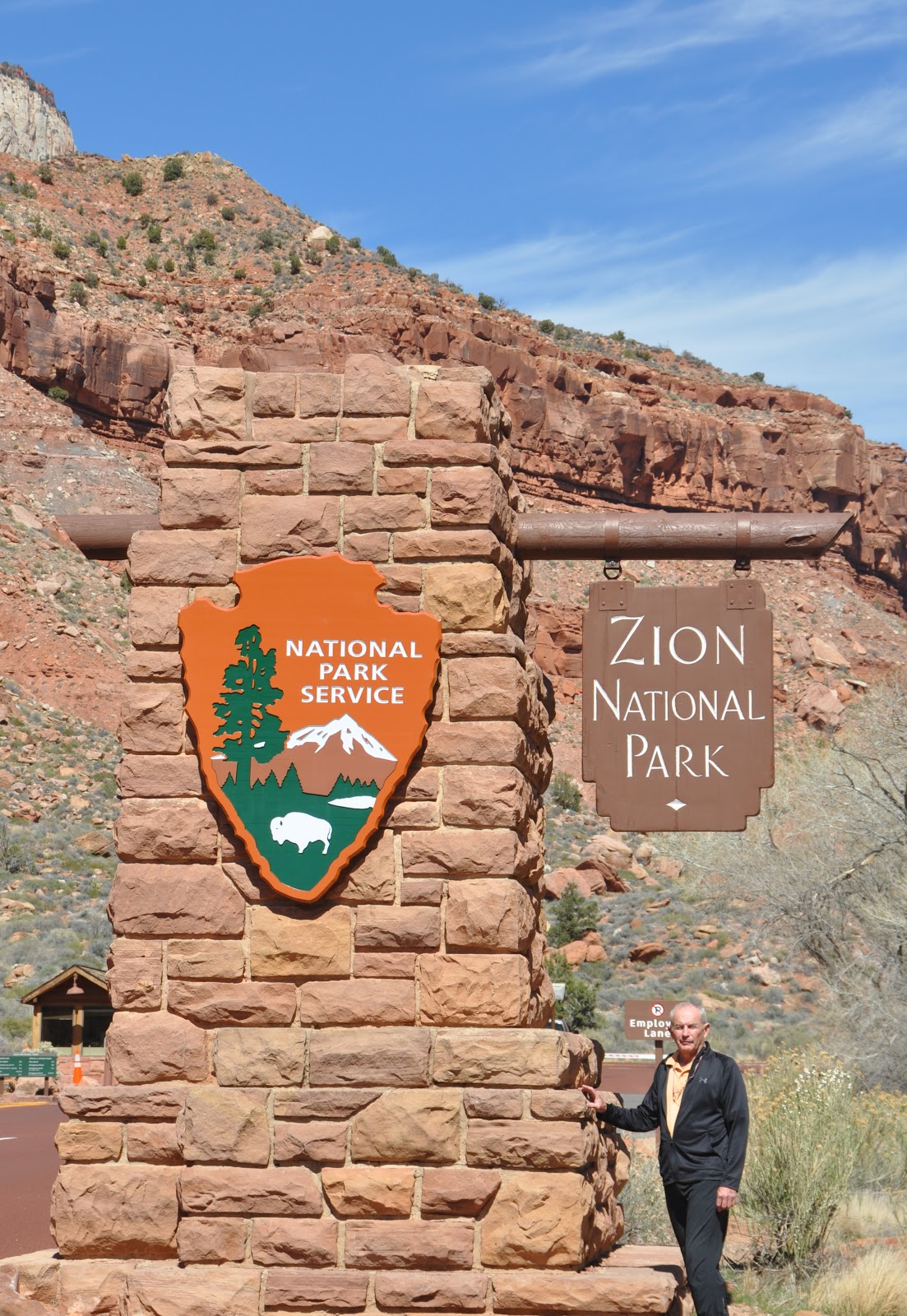Friday, Mar 15
NOTE: For those of you that are following our journey, you may look at additional pictures which we've uploaded. We could not, by any means, use all of them in the blog. You should be able to see all the pictures at the following link.
https://plus.google.com/photos/103547083335306738471/albums#photos/103547083335306738471/albums
We've settled into a large park near the South Entrance (the main entrance) to Zion National Park. It's only drawback is that we are boon docking - no utilities. We had forgotten that it's a weekend, and for the first time in a long time, the park is a little crowded. But we got a great spot.
After several days of constant travel, we've decided to stay put for at least two days, maybe more. It's quite exhausting to get up every morning, get everything ready and drive a couple hundred miles in a relatively complex machine, then set up camp again that evening. Plus it takes constant attention to keep this 30,000 pound bus on the road. We need a break. At this rate, I'm not sure when we'll get back to Spruce Pine.
 |
| Clara needs a break! |
For about the first time since we've been on this trip, we ate dinner comfortably outside on the picnic table. It is quite warm - and there is NO SNOW. The temperature should be in the high 70's or low 80's tomorrow. It's been a while since we've seen these comfortable temperatures. We've got no specific plan other than to see some of the beautiful sights.
Saturday, Mar 16
Clara made the comment today that "I've given out of adjectives to
describe what we have seen". Sheer cliffs that reach 2 to 3 thousand
feet straight up in the sky. Rocks with layer upon layer of
beautiful colors. White mountains, red mountains, green mountains, black mountains.
It's all here, and in beautiful excess.
We started the morning with a slow
drive up Zion Canyon. Every curve brought majestic new views. It
was hard not to stop and take another picture, and another, and another. We ended up with over 200 today.
At one point we even took a picture out
of the sunroof because that was the only way we could see the
cliff because it was straight up right beside the road.
 |
| It's impossible to capture the magnitude of the cliffs next to the roads. This picture was taken through the sunroof looking straight up. |
After enjoying this ride, we took
another road which takes us through a 1.1 mile tunnel. We had
considered taking the RV on this road and going to Bryce Canyon
National Park, but the park service requires a lead car, and they
have to stop all traffic while the motorhome goes through the tunnel because of our size and
height. After driving through it in the car, there wasn't much
question that we are going a different route in the motorhome.
 |
| The rock layers go in many different angles. |
We were fascinated that the scenery
could be so different on the tunnel from from that in the canyon.
After taking in as much as we could
absorb, we went out of the park into the Gateway Town next to the park and had an open
air lunch at what was once a gas station. Great Mexican food.
After some ice cream at another stop,
Clara had to go back to a store we had briefly visited yesterday
afternoon. She wanted a Wind Sculpture that a local artists makes.
It will fit well in our yard in Beaufort. I don't think it would
last very long in the 90 + mph winds at Spruce Pine.
 |
| Clara's new Wind Sculpture |
After all this, we still had
time for our first bike ride on this trip. We've either been too
busy, it's been too cold, or too hilly. We've dragged the bikes
around for all these miles, and it was nice to be able to get on them
and ride for a while.



Tonight we've enjoyed a
campfire (again a first for this trip).
For Evan and Anna: Anna, much like what you've said many times when we are at the mountain house - "The mountains never change but they change every day". That applies dramatically to Zion National Park, and many other places here in the West. Everything in Zion takes life from the Virgin River's scarce desert waters. Water flows and solid rock melts into cliffs and towers over millions of years. The landscape changes as canyons deepen to create forested highlands and lowland deserts.
A ribbon of green marks the river's course as diverse plants and animals take shelter and thrive in this canyon oasis.
North of Zion, rain falling on the 11,000 foot-high Colorado Plateau races downhill, slices Zion's relatively soft layers, and pushes its debris off the Plateau's Southern edge.
Long before today's landscape even appeared, streams, oceans, deserts, and volcanoes deposited thousands of feet of mud, lime, sand and ash. The immense pressure and heat of accumulating sediments turned lower layers to stone. Later underground forces uplifted the Colorado Plateau over 10,000 feet above sea level.
Rain water then worked the Plateau's minute cracks, loosening grains and widening fractures - and eroding the Plateau into today's mighty canyons.
These processes continue, rivers still deposit sediments that turn to stone, earthquakes still punctuate the Plateau's upward journey, and erosion pries rockfalls from Zion's seemingly unmovable cliffs.
Eventually, in millions of years, this beautiful canyon will melt away and others will form.
All it takes is time.
The mountains never change, but they change every day.
We're thinking that we'll
head toward Arches National Park tomorrow.
















































